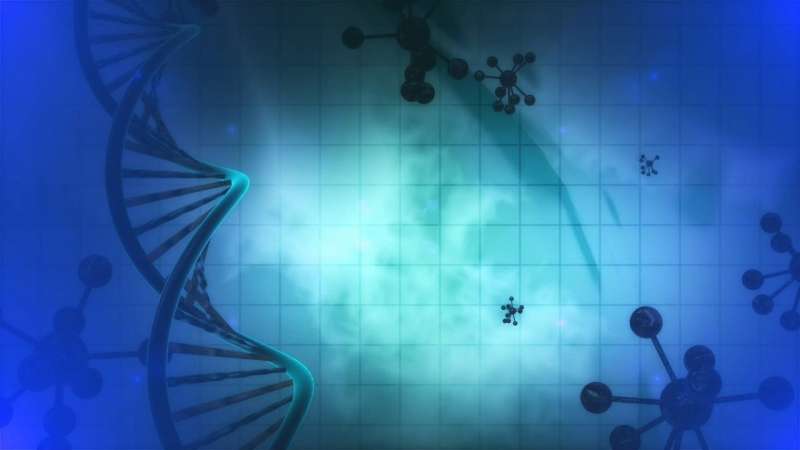Credit: CC0 Public Domain
In the January 7th edition of Communications Biology, researchers at InsideOutBio argue that an unusual form of DNA with a reverse twist may have helped thwart the invasion of the human genome by junk DNA. This mechanism has subsequently evolved into one defending against modern day pathogens.
During its evolution, the human genome was under attack by junk elements belonging to the Alu family. The only thing these elements know how to do is copy themselves over and over again. They engage in an endless cycle of insertion into DNA, transcription into RNA then copying their RNA back into DNA. They elements preferentially home to active genes, so guaranteeing their transcription back into RNA. In the process, junk elements disrupt the genes they invade in ways that are potentially lethal to a species. Left unchecked, junk elements are an existential threat. How did humans survive this assault?
In the January 7th edition of Communications Biology, Alan Herbert argues that an unusual form of DNA with a reverse twist may provide an answer. The DNA is unusual in that the two DNA strands form a left-handed staircase whereas the Watson and Crick DNA is right-handed. The left-handed conformation, called Z-DNA, binds an equally unusual enzyme, ADAR1 that changes "A" letters in double stranded RNA to the equivalent of "G" letters. RNA editing events such as this destroys the ability of junk elements to replicate themselves senselessly. ADAR1 is targeted by its Z-binding domains. The enzyme exploits a vulnerability in the junk sequences that favors formation of left-handed Z-DNA during transcription and formation of left-handed Z-RNA as the transcripts fold-back on themselves to initiate the insertion of a DNA copy of themselves back into the genome.
In the modern era, the Z-binding ADAR1 has been coopted to regulate the innate immune system. By deactivating double-stranded RNAs produced by remnant junk DNA and by viruses like the one causing smallpox, ADAR1 modulates activation of interferon responsive genes, ensuring that the innate immune system response is of the correct magnitude. Only the long form Z-binding form of ADAR1 regulates interferon production. Failure to do so results in the Aicardi-Goutières Syndrome. ADAR1 also pairs with DICER1, a key part of the RNA interference pathway that is also important for inactivating Alu fragments and viruses. It is likely that the Z-binding of ADAR1 is key to targeting DICER enzyme to junk elements. Failure of the DICER1 pathway is associated with age-related macular degeneration.
While the progress has been great, Dr. Herbert says "there are still many unanswered questions that are now experimentally addressable. Our understanding of the biological role of Z-DNA and Z-RNA will improve greatly as these results come in. The findings so far show that the shape of DNA, rather than its sequence, is another way of encoding genetic programs in the genome. It's exciting to think that the Z-conformation may have played such an important role in defending the human genome at a critical time during our evolution. The new insights lead to an improved understanding of immune related diseases and will help developing new treatments. For example, it has been recently reported that the stimulation of interferon responses by the inactivation of ADAR enhances anti-tumor responses to checkpoint inhibitors in animal models of cancer."
Accidents happen all the time. It make take a while to realize that there are sometimes good and surprising outcomes, especially in science. Z-DNA was discovered by accident nearly 40 years ago. It was unusual in that the two DNA strands were twisted to the left rather than to the right as described by Watson and Crick. Immediately it was asked: was it just one of those things or did nature exploit this unusual shape? At first, there was a lot of excitement, then the doldrums set in as working with the high energy Z-form of DNA tested the experimental limits of what was possible at that time. However, due to the excellent work of many talented scientists, the progress has brought the importance of the Z-conformation back into focus. Dr. Herbert led the team that discovered, after a long search, the Z-binding properties of ADAR1.
Dr. Herbert, a medical doctor and immunologist by training, is now President and CSO at InsideOutBio, which is pursuing novel cancer immunotherapies to provide long-term protection against reoccurrence of disease.
More information: Alan Herbert. Z-DNA and Z-RNA in human disease, Communications Biology (2018). DOI: 10.1038/s42003-018-0237-x
Provided by InsideOutBio, Inc






















